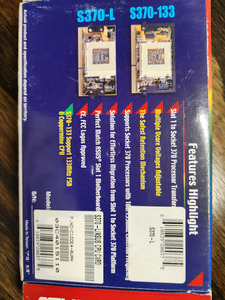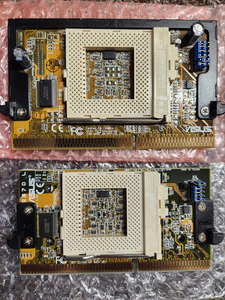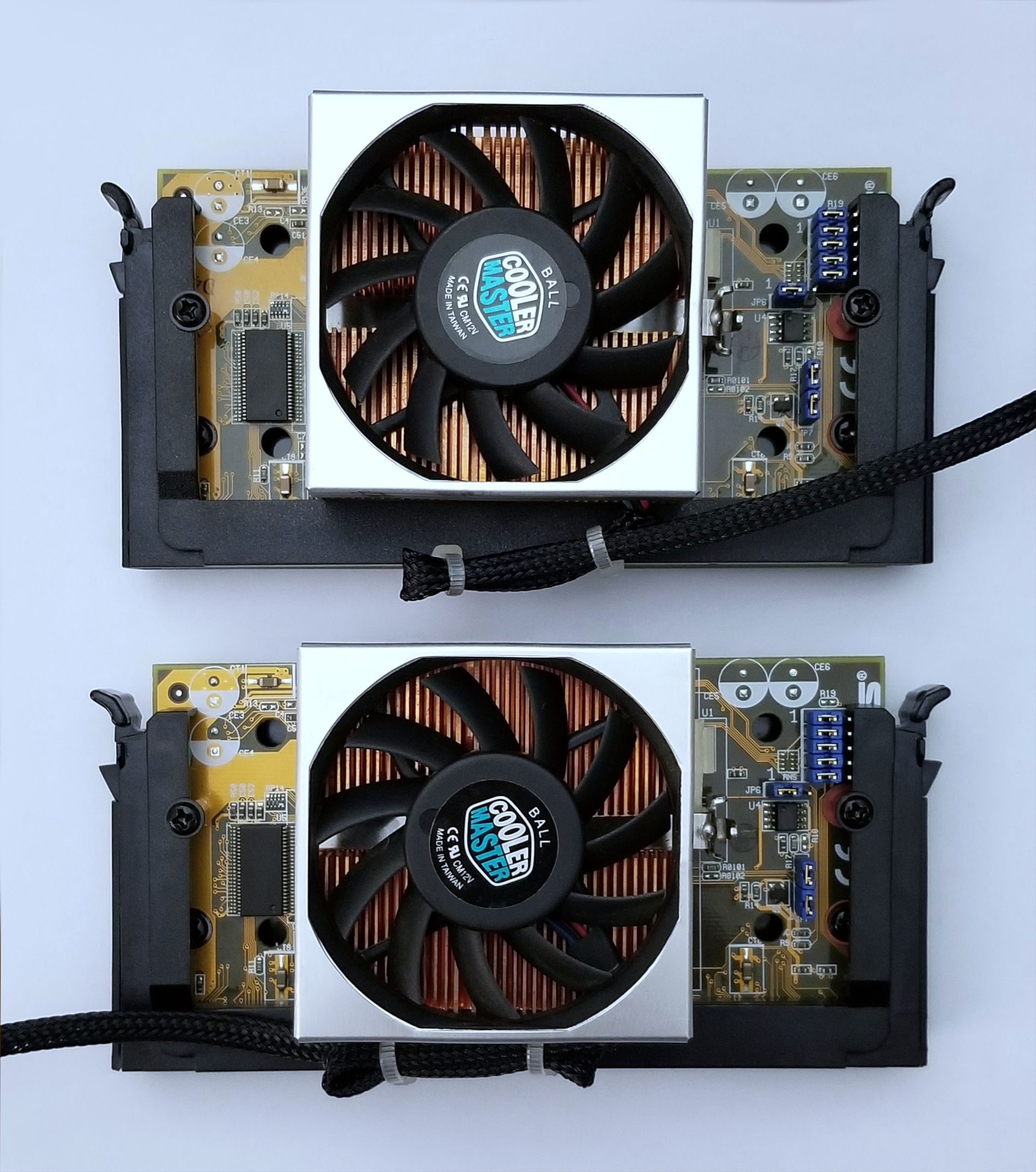I own a NOS s370-L and a s370-133. Unfortunately, no paperwork with them...only the boxes (maybe they never came with paperwork?).
Anyhow, the only differences that I can see is that the 133 has an extra a jumper for "cu-mine" or "celeron" and has the additional plastic surround on it. It also lists on the pcb a much greater range of voltage adjustments (although both have the same amount of voltage jumpers, 5).
Unfortunately, no DL to compare them with.
Both of the boxes are identical, besides a sticker of what's inside them. What confuses me is that the 133 says it supports 133fsb...but that's already stated in the fourth bullet point on the box (pic attached).
Physically, the 133 has three capacitors on that the L does not.


